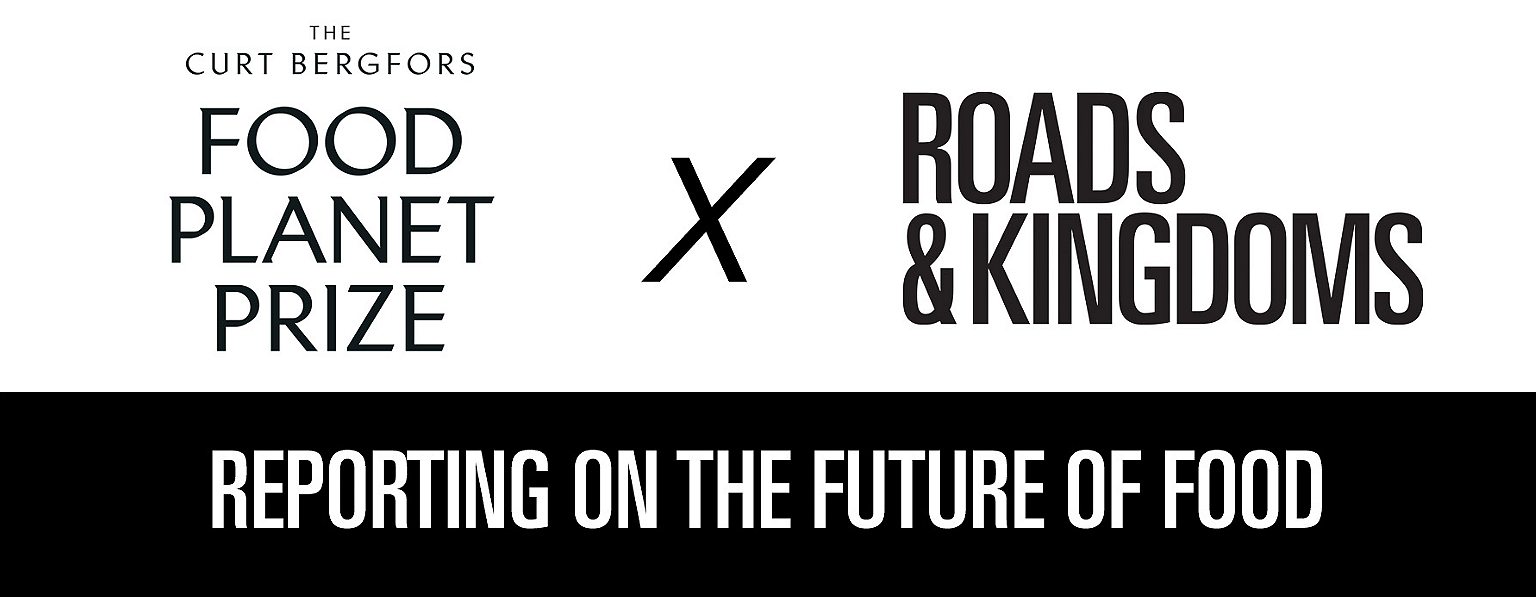Deep in the Ecuadorian Amazon, an organization called Yakum is seeding a better, cleaner, greener future for the indigenous Siekopai
SIEKOPAI REMOLINO, Ecuador—
Antonio Francisco Noteno and his wife Liliana had a plan. They were going to clear the forest on their property to finally be able to make some money. They would bring a bunch of cattle up to their plot in the Amazon, and they would plant African palms for palm oil, a hugely popular cash crop in their corner of Ecuador. But in the middle of the process—they had already cleared 8 of their 20 hectares—Liliana heard a cry for help.
Actually, they were both drinking yagé—better known as Ayahuasca, a psychedelic medicine sacred to many peoples in the Amazon and an important part of the Siekopai culture. In the middle of their ceremony, a tiny tick entered Liliana’s vision.
The tick had a question for Liliana: “This is my home, my life. Why are you destroying my house?”
As Noteno tells this story later, he places his palm on his chest. “At first, I didn’t agree with my wife. I said, ‘Do you think the money is going to fall from the leaves? Do you think our daughters are going to study for free because their parents plant trees? No! We need money.’”
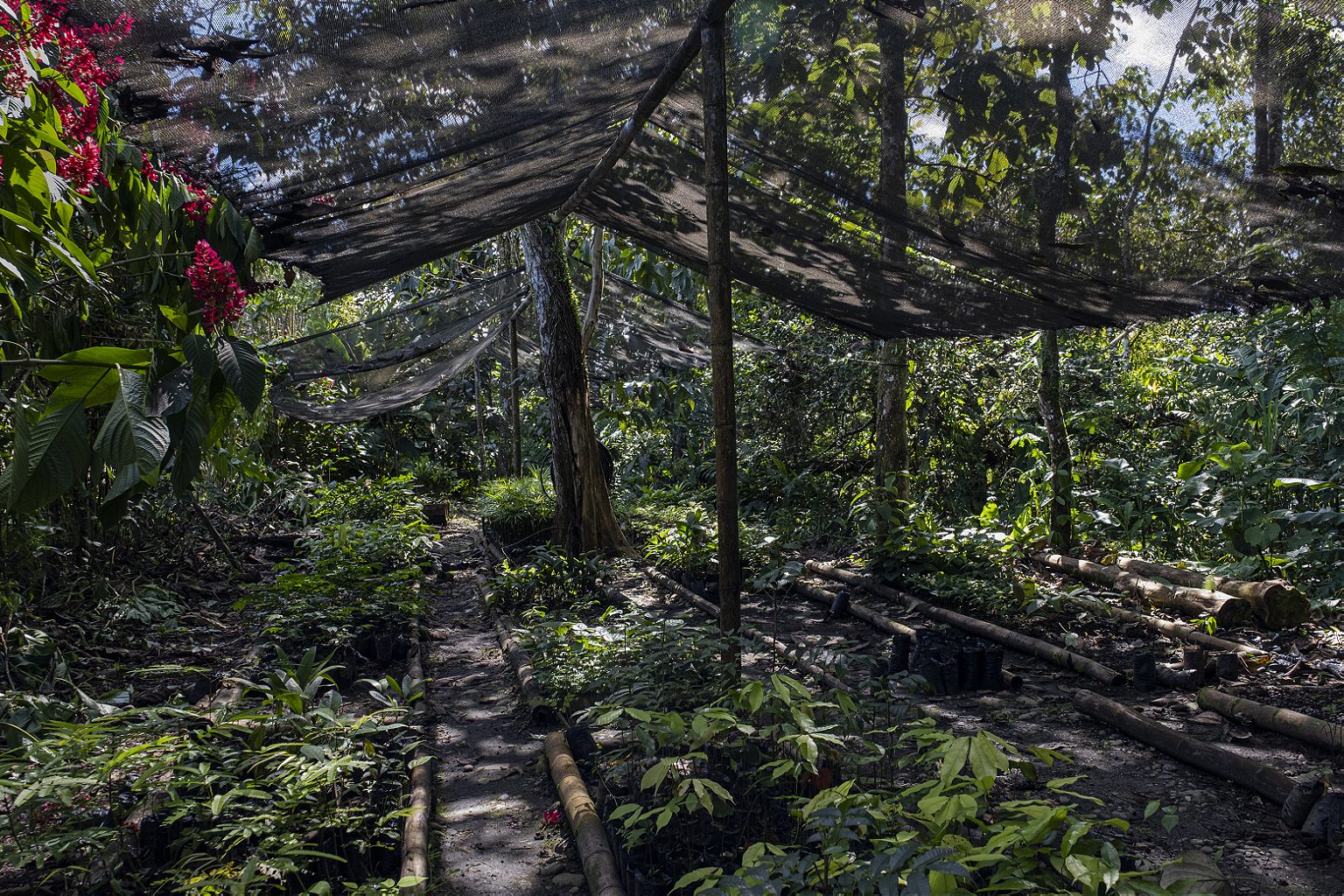
But then, he says, he reconsidered. “How could I not change my mind and support my wife, when she told me about this? Eventually, planting fruit trees will be useful for me. I have two daughters, they’re eight and nine. One day, when they grow up, their children and families will be able to consume what we plant today.”
And so, just like that, Noteno became a partner with Yakum, an organization that supports Ecuador’s indigenous communities by helping them restore and strengthen their forests.
In Noteno’s case, that meant planting unguragua and camu camu for food, balsamo of Peru for wood and blue huayruro for crafts.
Nick Ovenden, a British biologist and educator, first launched Yakum—the name comes from the Shuar language word for howler monkey, whose cry was a metaphor for Yakum’s call to action—as a GoFundMe in 2018.
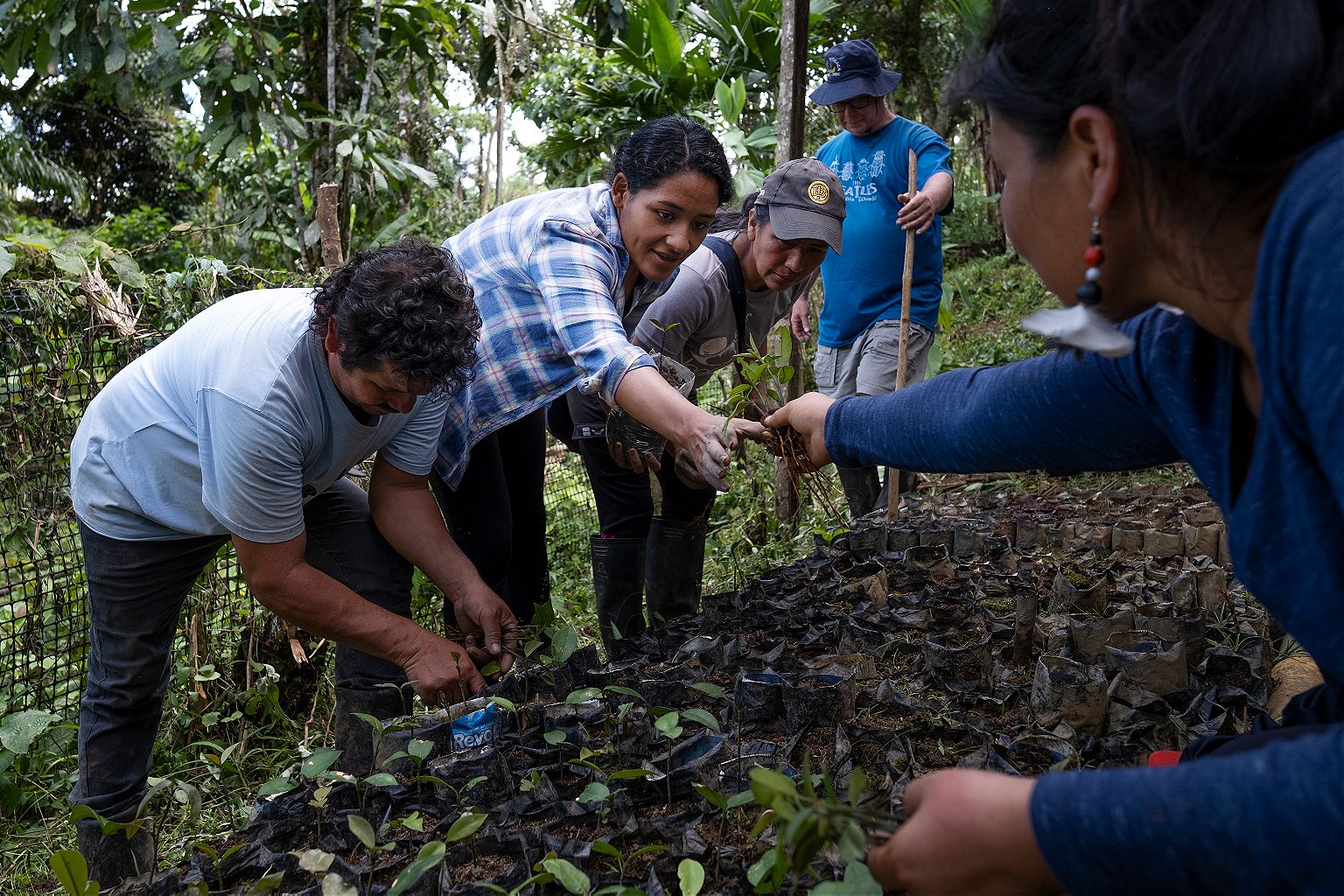
The following year, Mike McColm, an experienced environmental organizer and activist originally from California, joined the effort. Together they legally established Yakum as an NGO and set out to figure out how to help indigenous families like Noteno and Liliana make sustainable, regenerative land use a reality on their lands in the Ecuadorian Amazon.
The idea is a powerful one: help the people of the Amazon ensure their food supply—including the Siekopai community—without destroying the forest in the process. By planting trees for food as a viable alternative both to processed foods and to fast-cash but destructive crops such as palm oil, Yakum hopes to support to improve food sovereignty and nutrition—with so-called Food Forests. The forces they are fighting against are complex and relentless—industrialization, deforestation, urbanization, culture and language loss—but Yakum thinks seeds can be a potent countermeasure.
Thankfully, the Amazon is home to superhero seeds. The fruit of the camu camu has 100 times the vitamin C of lemons. The morete palm produces a thousand pounds of fruit a year, with 11 times the vitamin A of a carrot, provides habitat for up to 900 living species, and has leaves that can be used to make thatched roofing. The jaboticaba fruits six times a year and is used to make jelly, desserts, wine, soft drink, ice cream, even wine. The inga ilta tree has pods up to three feet long with edible pulp like its cousin the ice cream bean, but also has edible seeds that provide much needed protein. As a bonus, its leaf litter is an abundant nitrogen fixer, like a “fertilizer factory for the soil”, says McColm.
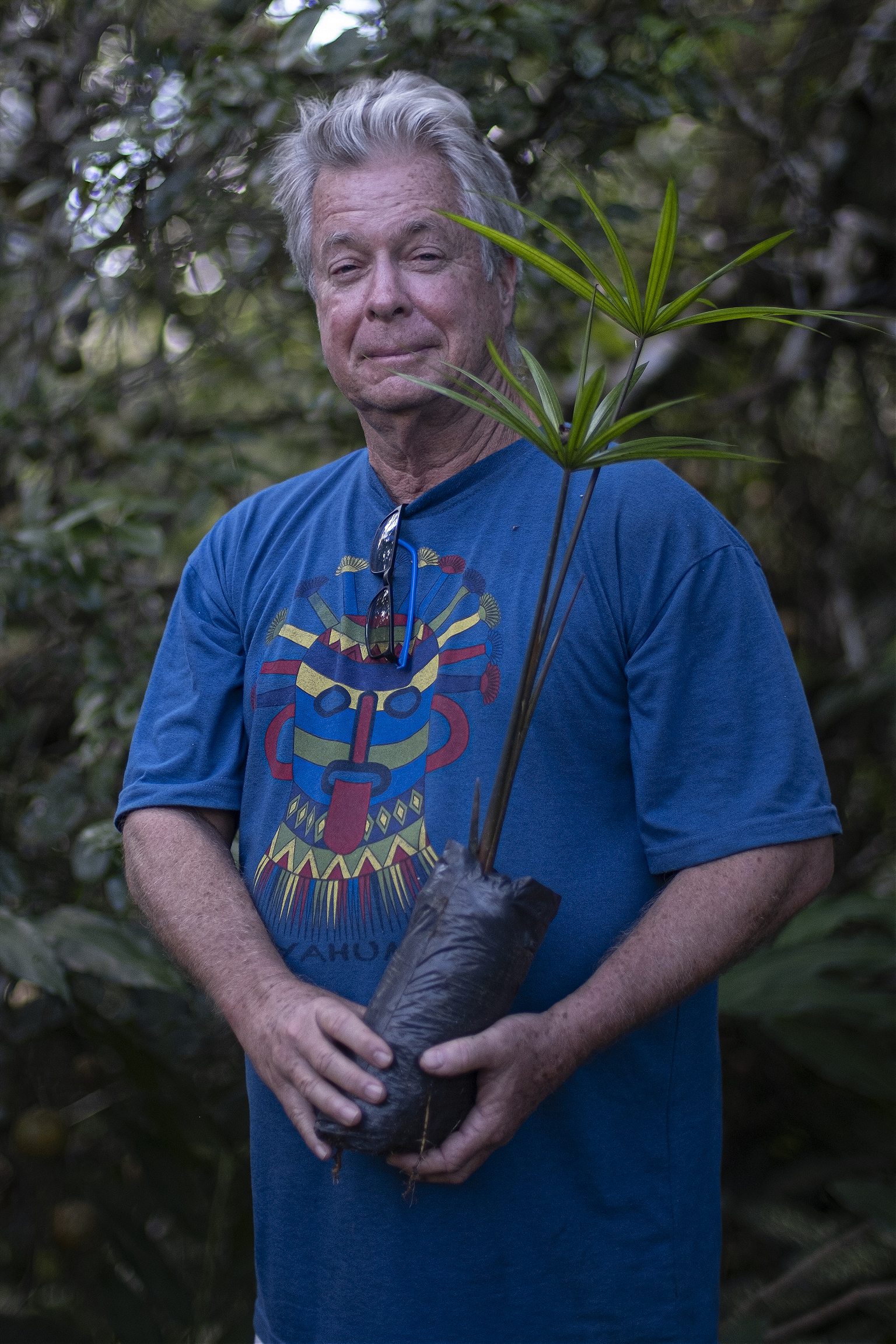
Yakum has a nursery in Sachawaysa, near Tena, where McColm lives. He personally provides many of the seeds to Yakum from his own land, but the 12 member Yakum team also forages for seeds—for fruit trees, hardwood trees, medicinal plants. They have planted 223 different species, including several on The World List of Threatened Trees, such as the mahogany tree. McColm’s eyes shine when he recalls the first time he saw mahogany seeds in nature, back in the 1990s: “It was like picking up gold.”
McColm has an avuncular, effusive enthusiasm for these plants and their powers. If you ask him to start describing the work, you’ll get a flowing river of facts and asides and bon mots and place names and phylum names and names of people he cares about deeply and thinks Yakum can help. Since he first came to Ecuador in 1983 he has worked with the Awajún people in the Peruvian Amazon, and with reforestation throughout Ecuador, from the inlands to the coast. In total, he estimates, he has contributed to planting approximately seven million trees over his career. “I really just enjoy getting to plant a lot of trees all the time,” he says with a smile as we sit down for a lunch of, of all things, falafel in Tena.
Oil extraction in the Amazon continues to be Ecuador’s most important source of income, as it has been for decades.
The name of the Siekopai roughly translates as “multicolored people”. The Spanish called them los encabellados—the long-haired—after the way their men wore their hair. There are 14 indigenous nationalities of Ecuador, totaling 1.1 million people. Kichwa is the biggest group, followed by the Shuar people, with 100,000 inhabitants. Only a quarter of indigenous Ecuadoreans live in the Amazon, and those include some of the country’s most vulnerable populations, like the Siekopai, who number a little less than 700 people, according to the last census made three years ago.

Their lands can also seem remarkably remote. The settlement of Siekopai Remolino, population 250, is only accessible by canoe, and a recent monitoring mission with Yakum took five days, much of it traveling on the river past endless plantations belonging to the country’s biggest palm oil company, Palmeras del Ecuador (Ecuador is now the 11th largest palm producer in the world). These logistical challenges are constant for Yakum: having run out of room in the canoe for saplings, they began transporting the germinating seeds instead.
Distances notwithstanding, Yakum is committed to monitoring the trees they plant. Every two or three months after planting, they return to measure height and circumference and viability. It is a source of extreme pride, and a key to their success, that their plantings have a survival rate of 95% or higher in those initial check-ins.
Gilberto Piaguaje, a Siekopai elder, meets our group when we arrive and we join him while he plants corn, an increasingly important crop for the Siekopai (they make flatbread with corn flour as well as cassava flour). Piaguaje tells a story about how his grandparents drank ayahuasca, which gave them the ability to travel far away as spirits, and then how they came back with the first Siekopai corn. But it’s soon clear these were not grandparents, but ancestors, and he’s speaking of events that happened centuries or more ago.

It’s not just his stories that seem suspended in time. Traditions are everywhere. Before leaving to work in the forest he always paints his face with red tincture. This is, Piaguaje says, to protect him from the wild spirits.
There is much to worry him. The government seems failing in its fight against illegal gold mining throughout the Amazon region. The river that flows alongside Siekopai Remolino—the Aguarico river—is severely contaminated from decades of oil extraction and pollution in nearby oil fields. Upstream raw sewage is dumped into the Aguarico from Lago Agro, and then there’s oil discharge, mercury from mining, toxic agrochemicals for palm oil.



And yet oil extraction in the Amazon continues to be Ecuador’s most important source of income, as it has been for decades. Even smaller incursions, like a band of violent cattlemen and squatters who crossed in from Colombia in the beginning of September, are a serious threat to the Siekopai, requiring a concerted vigilante effort to keep them from destroying the forests.
For Piaguaje, the key to the Siekopai standing strong against all these forces is reinforcing their own lands. “For me, forests with animals and rivers is a wealth. The forest covers us, it is like a house for us… that’s why we always talk about conservation, because in other communities they already see more the money, they want to change to a new way of life. Money in exchange for logging the forest and to plant African palm,” says Piaguaje. “This is what we always talk about, and now in the meetings. We could look for someone who can pay us because we are guardians and caretakers of the forests. Because in other parts of the world you say that this forest is purifying the air, that they are the lungs of the world. That is why we are planting fruit trees and reforest[ing]. We are resisting with our way of thinking,” he says.

Piaguaje tells the story of how he has been bitten by the so-called X snake, a type of pit viper that is one of the most venomous snakes in Ecuador. Several of his dogs were also bitten. If it is not treated, it is deadly. But he shows me a medical plant, which he used to heal himself and the dogs. Piaguaje reflects on the value of the forest and the wildlife within it. “If I cut down my forest I have nothing. I will totally lose my way of life. Seeing the forest being cut down elsewhere feels like a strong pain to me,” says Piaguaje.
Yakum has grown quickly to meet the challenge. Today they have a broad range of donors, from Belgium’s BOS+ ($115,000), the US-based Regen Network ($100,000), Lush cosmetics ($100,000), Rotary International ($65,000), and many more. In total, they have Yakum planted approximately 30,000 trees, at an ever-increasing pace. In 2021 they planted 10,000 trees in total. In just the first six months of 2022 they planted the same amount.
But their real innovation lies in listening. “We support the community,” McColm says. “We listen to what they need and try to help.” Staffers like Arley Orlando Payaguaje, a 23-year-old Siekopai, make Yakum what McColm says is the most diverse NGO in Ecuador.
Payaguaje has always been intrigued by economic alternatives for his people. He describes how things have changed since he was a teenager watching Ovenden and Yakum begin their outreach. “In the beginning, people were not really interested in planting trees,” says Payaguaje.
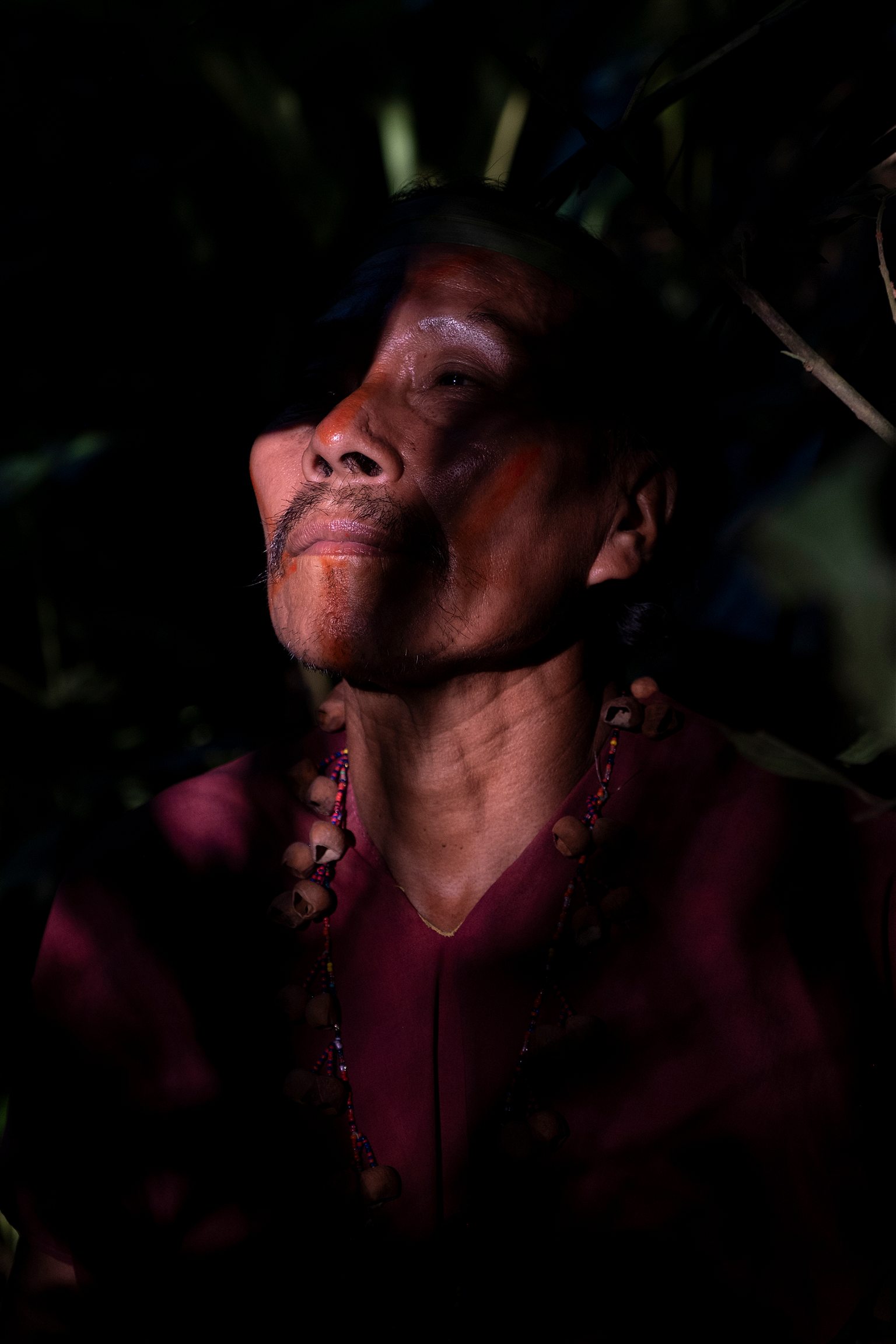
“What’s the idea of planting a tree and then waiting 15 years for its fruits, if I’m hungry today and I need money to send my children to school now?” But these days he’s already showing people results, how the trees grow, and now Siekopai people are asking him when they too can get their seeds, he says.
Another Yakum ally, a biologist named Lexie Gropper, runs the Amisacho Restauration center close to the jungle city of Lago Agrio, which is known mostly for years and years of oil extraction. Gropper says that if you want to support the land, you have to think about people’s financial situation. “The economic part is essential. People make decisions based on finances,” she says. “They might like to conserve the forest and plant trees, but if they lack money to send their children to school, then they will cut down the forest anyway.”
It is, inevitably, all related. The old ways of maintaining food security didn’t involve currency at all; it was based on the chakra system of small gardens along with a little bit of livestock and a lot of hunting and gathering. But as even those hybrid agrarian and indigenous lifestyles fall to modern pressures, nutrition has become a crisis. In Yakum’s most recent study of four Kichwa villages near Sachawaysa, they found that 68% of the population suffers from malnutrition, eating just one meal a day and that almost entirely processed foods. Even in Siekopai Remolino, which is near Yasuní National Park, known as one of the most biodiverse places on earth, fruitful agriculture is hard to come by.
“Many have this wrong idea that the soil in the Amazon is nutritious,” says McColm. “But really it is bad, and often there have been bad practices for decades. That’s why we also work with soil regeneration,” says McColm. Restoring the soil is Gropper’s scientific specialty; improving the soil before planting is a large part of Yakum’s success. Hence the nitrogen-fixing plants, and Gropper’s use of bokashi, the fermentation-driven composting technique.
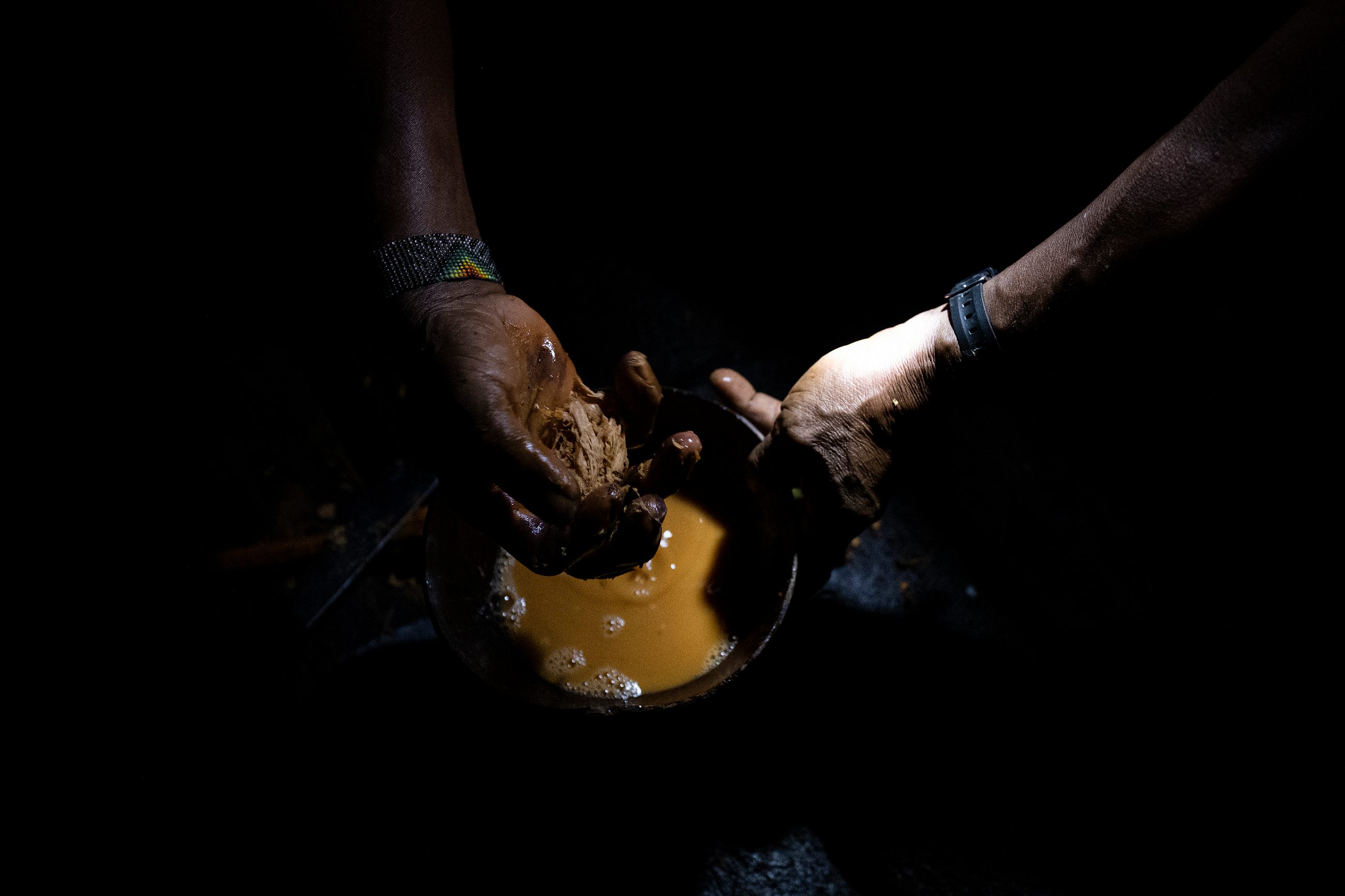
But there is more than biology at play in feeding people well. Processed foods have taken over much of Amazonian life. They first arrived with the oil exploration roads in the 1970’s, and soon small markets opened up throughout indigenous lands. Now processed foods are the cheapest and most readily available foods in the Amazon.
“You have to look at it in a holistic way.” says McColm. “You must support their culture, for them to continue to be connected with their territory and forest.” That is why Yakum also supports cultural activities in communities, such as ceramics. It’s why, when bandits attack or illegal miners encroach, Yakum sees it as part of their mission to offer material support, even just money for food or transport. “The palm growers are knocking on the door in Remolino,” he says. “They’ve been holdouts, protecting forests where other native communities haven’t.”

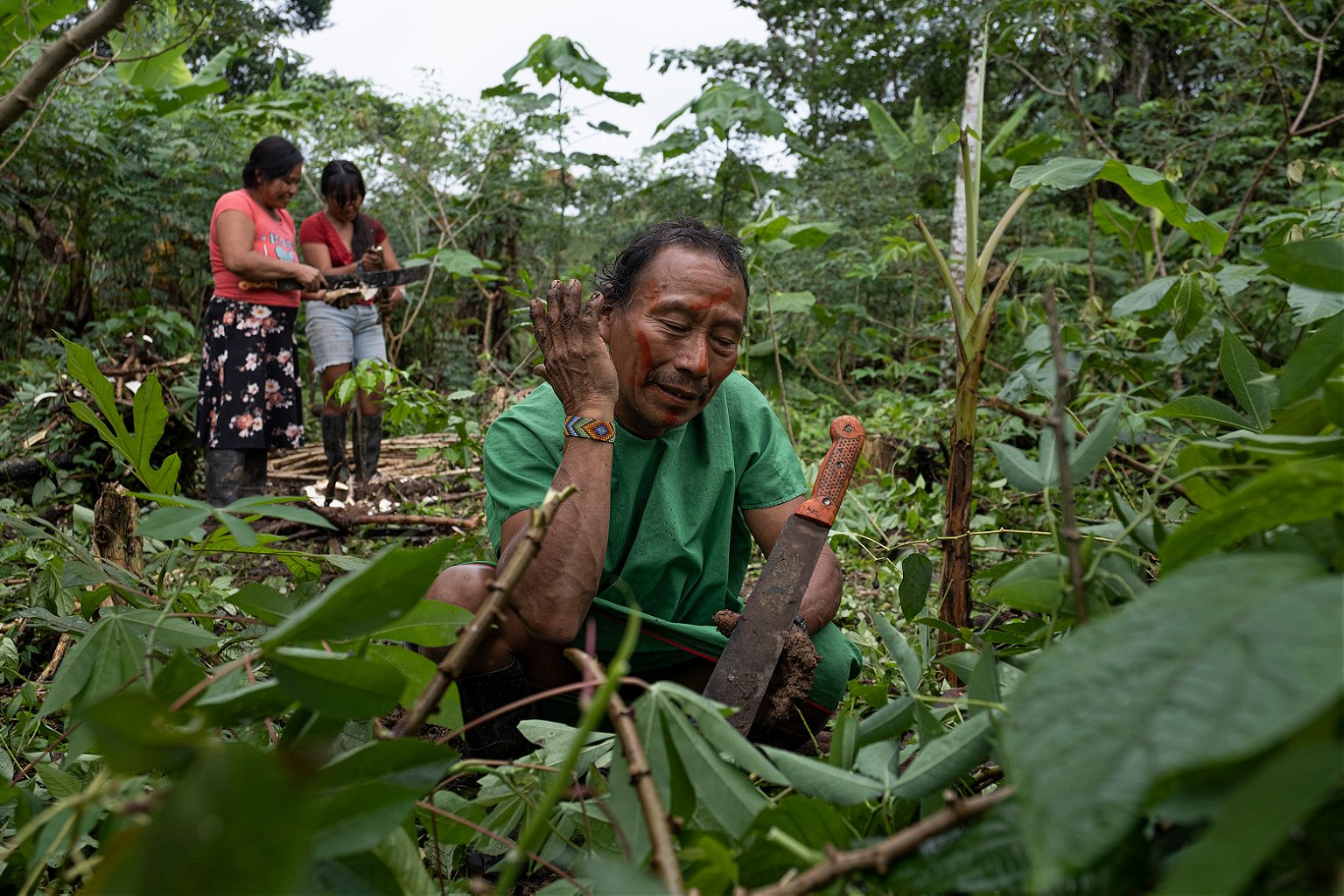
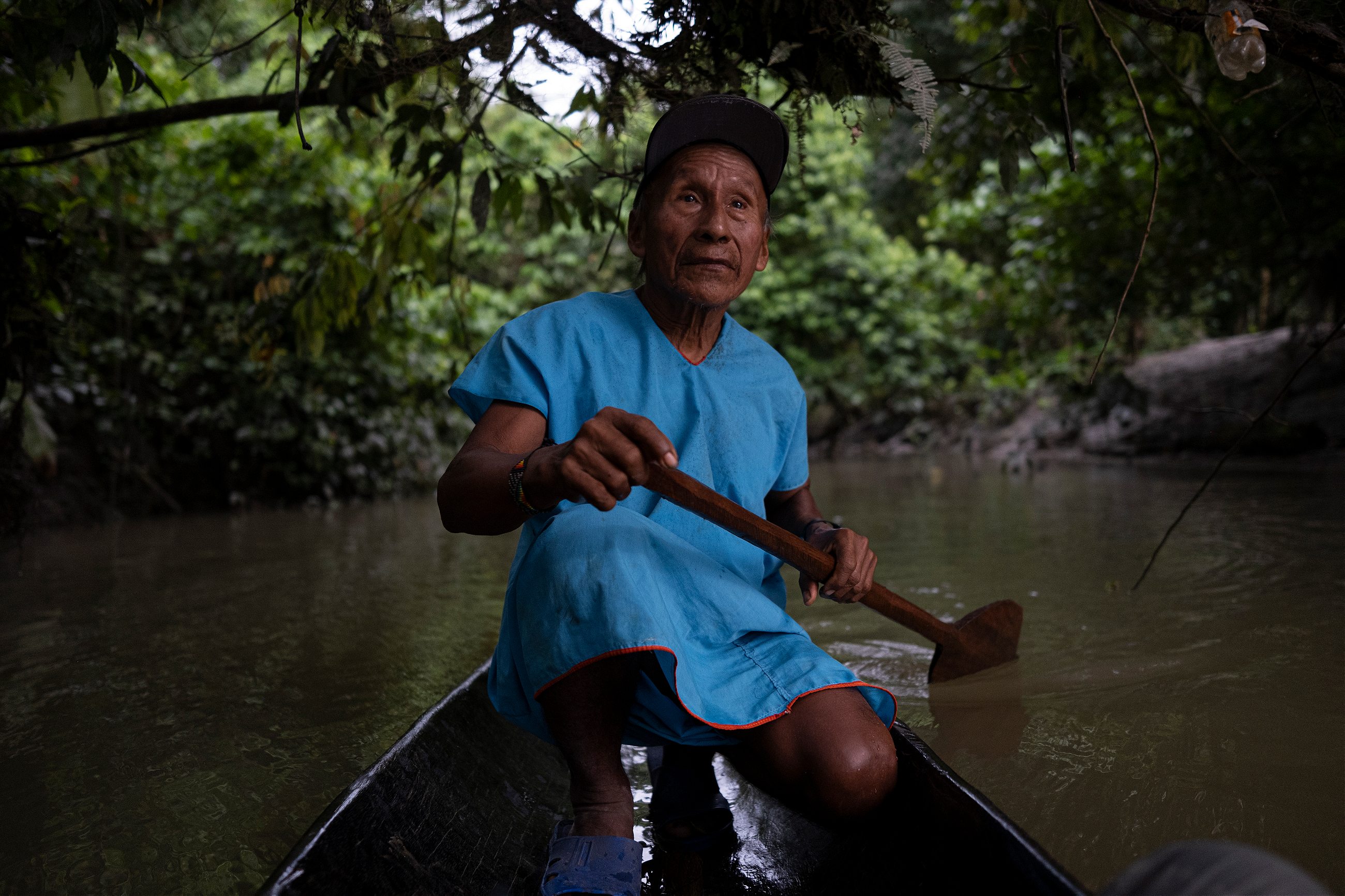
Back in Siekopai Remolino, Noteno is trying to strike the right balance.
“We need money to educate our children. We must work to educate our children and be able to send them to good schools and universities. We also need money to buy gasoline to be able to move on the river, and we need to buy groceries, like cooking oil, salt, and soap,” Noteno continues. But he couldn’t imagine turning his land over to palm oil. Not anymore.
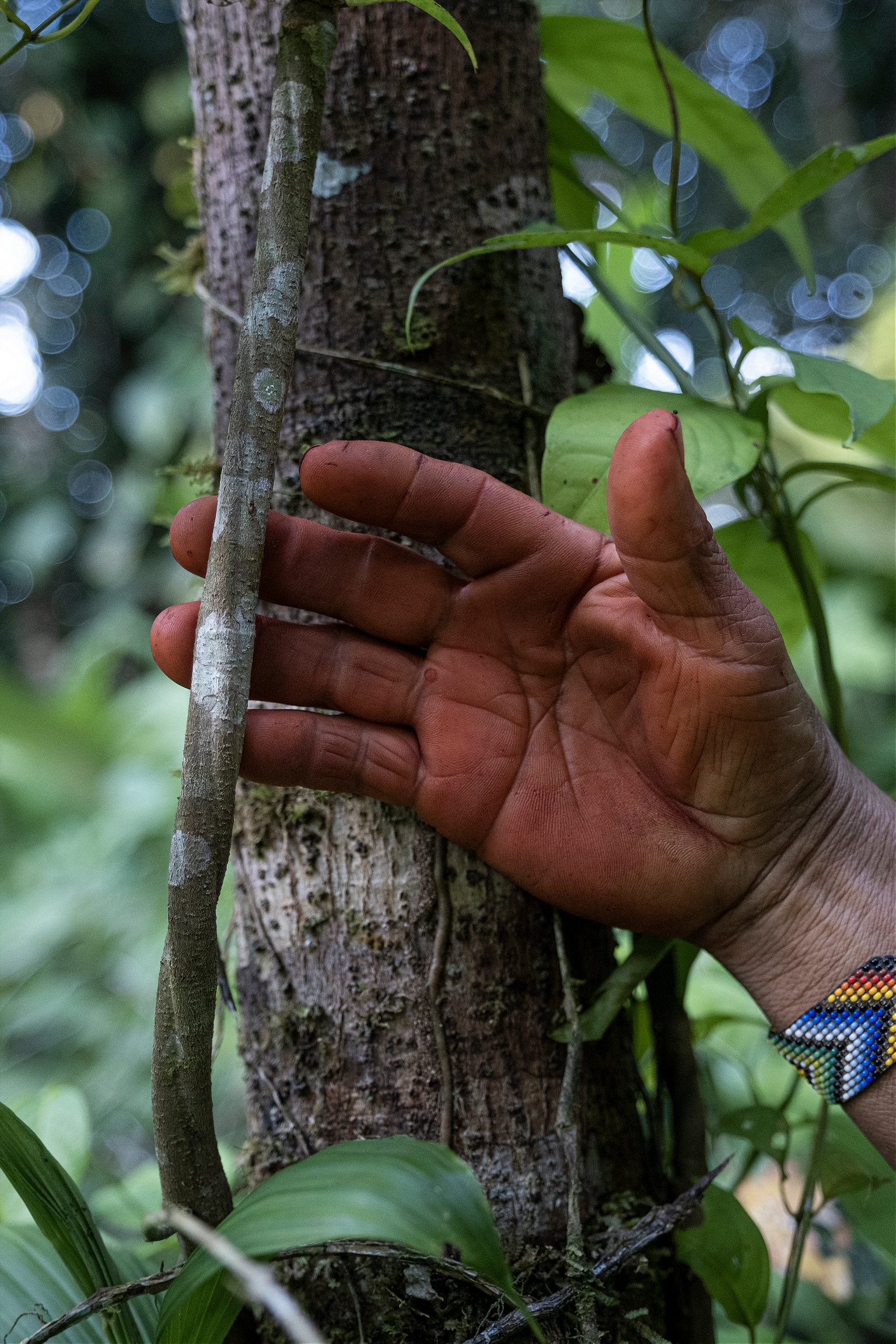
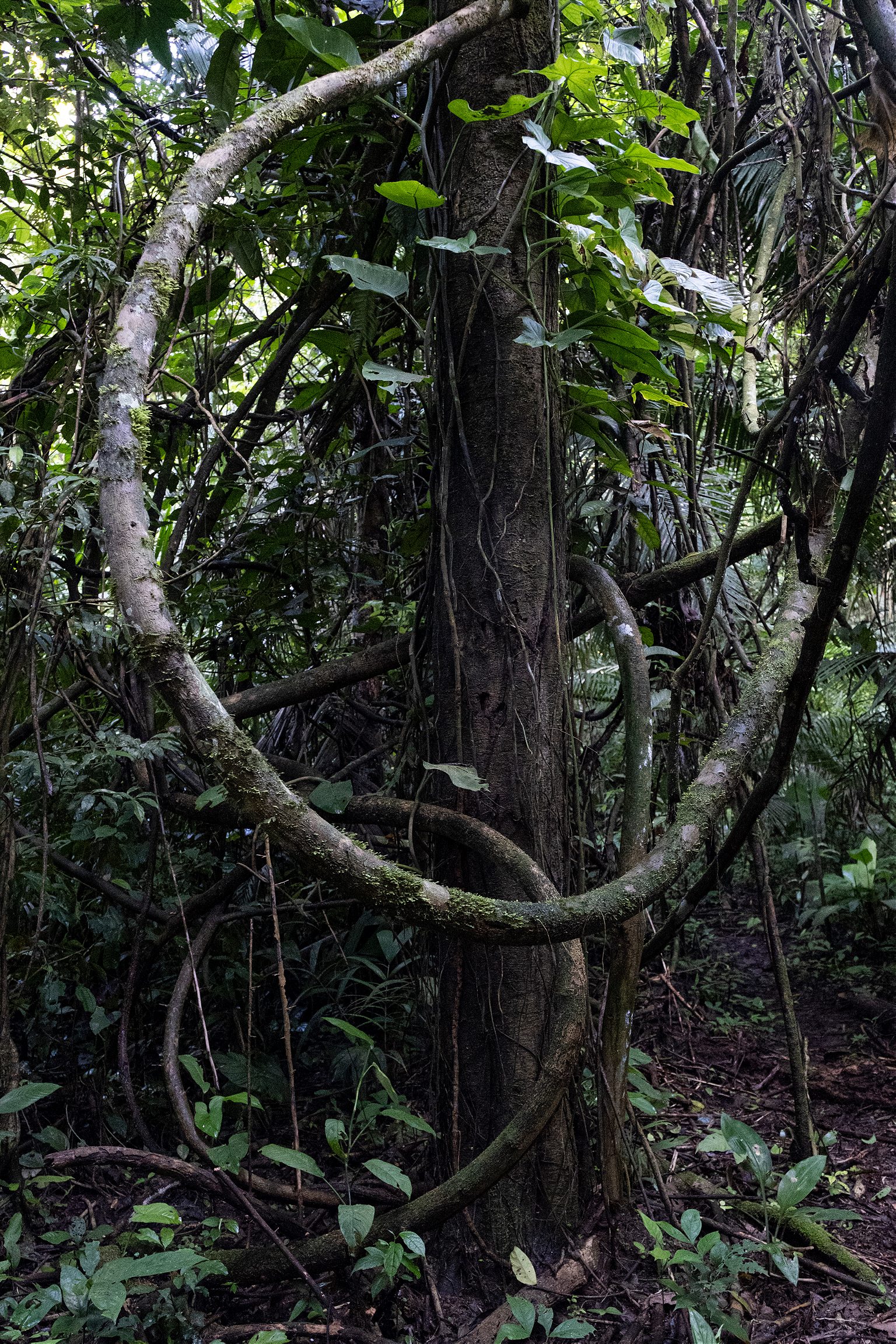
Noteno still has six cows, and also pigs. He shows me some marks on the bark of a tree:it’s from the tigrillo—the northern tiger cat, a threatened species. Yes, it comes through occasionally and eats some of Noteno’s chickens. But it’s a valued visitor nonetheless, a sign of health of the land.
“When you grow oil palm, you use a lot of chemicals. We would destroy the soil and it would be detrimental to us. Also, I would get sick faster because of the chemicals. The oil palm is destroying more and more—as Siekopai we are cornered. If someone plants oil palm, this is going to go a long way. Others will say, I want to plant oil palm, like him. Being affected by oil companies and oil-palm plantations is really sad. I changed my mind and now I am reforesting with joy,” says Noteno.
Since February, Noteno and his wife have planted around 600 trees. His goal is to reach 4,000 by the end of the year. He also wants to build a small lodge to receive tourists here; some of the fruit trees are particularly good for attracting monkeys. They also have toucans and macaws. The tree planting is urgent, says Noteno: “We must do this, before people start to think that the African palm is good. Otherwise, we are going to lose this forest,” he says.
Any sustainable food game-changers on your radar? Nominate them for the Food Planet Prize.
